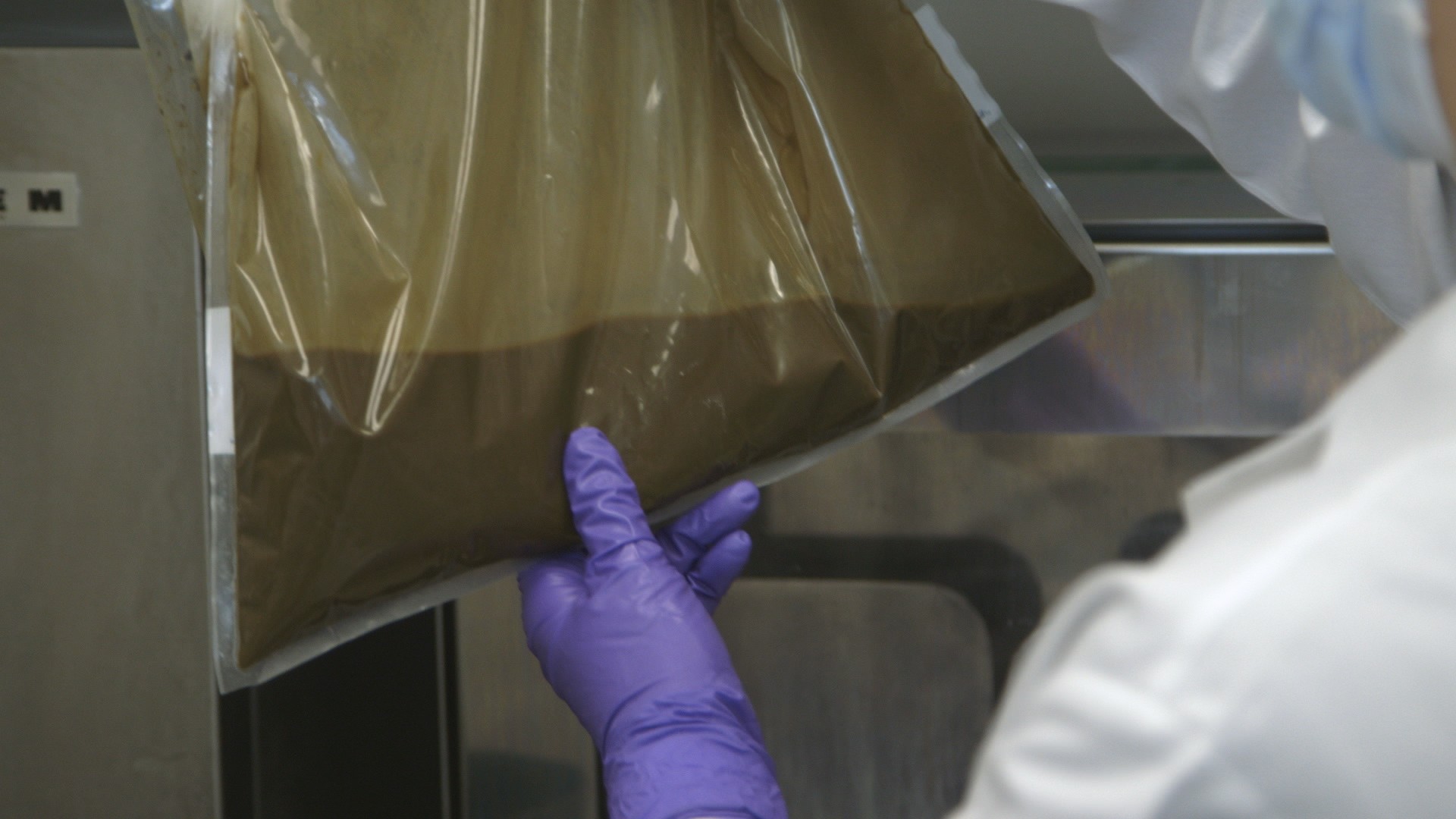Hiking the John Muir Trail was, for backpacker Cesar Cardenas of California, a life-changing experience. It was also, he says, “one of the most disgusting instances I’ve had with things left behind by fellow backpackers.” While setting up his campsite at Silver Lake, Cardenas stepped in a pile of human feces, observed three additional freshly dropped piles in the area surrounding his site, and in his own quest to poop, dug up a fourth stool that was superficially buried beneath an inch or so of dirt, leaving his cathole trowel caked in someone else’s poo. “This kind of thing should never happen even once,” says Cardenas, an avid hiker who has encountered similar situations at sites in the Sierras and the San Bernardino Mountains. “You’d think it would be less problematic the further out you go, but now people are really into trying out the backcountry for the first time…which is great, but unfortunately they show up uninformed and unprepared.”Ben Clisham, a hiker living in California, had a similar experience backpacking the JMT with his girlfriend. “It came to a point where my girlfriend and I had to do a poop check at each campsite we came across to make sure we weren’t setting up our tent next to a maggot infested turd,” he tells me. Clisham later saw two rangers picking up soiled toilet paper from one of the dirty sites, essentially filling in as doggie daycare attendants for grown-ass humans. “No ranger should have to pick up someone’s shitty toilet paper.”When I asked about it on a hiking and backpacking subreddit, one backpacker told me that at his campsite in Bighorn National Park, “every single large rock seemed to have human poop and dirty toilet paper on it or tossed under it.” Another hiker recounted accidentally sticking his trekking pole into a pile of human feces in the middle of a trail in the Smokies. I also posed the question in a hiking group on Facebook; one user lamented the time when her dog rolled in the stuff in Olympic National Park. (How did she know the dung was human? Corn kernels.) On my own recent trek along the Teton Crest Trail, I ended up camping right next to a small thicket of trees with a garden of brown-smeared toilet paper blooming from the roots. The following day, I stumbled upon the same phenomenon: a confetti of visibly used TP, tucked in a grove abutting an otherwise pristine glacial water source.Exposed human poop acts as a breeding ground for disease, contaminates water sources with nasty bacteria, and is, in general, a pretty gross surprise. And it seems to be increasingly piling up in our most beautiful and wide open spaces. “It is certainly a growing problem,” says Ben Lawhon, education director for the Leave No Trace Center for Outdoor Ethics, which works to educate people about responsible stewardship of public lands. “It's directly attributed to the simple fact that we're always making more people, but we're not making more land, so there are more and more of us trying to enjoy a finite space.” While the NPS doesn’t seem to keep specific metrics on solid human waste (I asked!), explosive attendance levels are bringing millions of people—and their bowels—into the national parks every year. The typical person produces, according to Lawson, an average of one pound of solid waste per day. TheNational Park Service reported nearly 331 million recreational visits in 2017. It isn’t hard to do the math. Some parks, like Yellowstone, are spacious and remote enough that they don’t suffer quite as severely (or offer pit and composting toilets in the backcountry); others are in danger of becoming feces-festooned dumping grounds. Mt. Whitney, a 14,500-foot tall playground for rock climbers, ultimately had to enact a “pack-out your own poop” policy because the turds were piling up faster than they could biodegrade in the mountain’s dry, rocky earth. Visitors now must empty their bowels into a bag (or DIY’ed “poop tube”), and pack it out with the rest of their belongings. Denali, where an estimated total of 215,000 pounds of poop have accumulated since 1951, issued a similar rule earlier this year. Among the backpackers I spoke with, both Zion and parks along the John Muir Trail came up frequently. “There have been many occasions where I’ve encountered other people’s waste or toilet paper [in Zion], even very near campsites,” says John Jones, an avid outdoorsman based in Utah. He points to the relatively small size of Zion’s backcountry, as well as campsites with less surrounding surface area (i.e., in tight canyons or abutting rims), as factors that make the park vulnerable to becoming a crowded al fresco port-o-potty.Lawhon says the Leave No Trace organization regularly hears from management at parks saying that improperly disposed human waste is their biggest issue. “I could give you a list of 100 places where I hear from managers at the federal, state, and municipal levels saying that this is a real problem for us,” he tells me on phone. Take a quick romp through LNT’s list of Hot Spots, or areas the organization has identified to be suffering from “severe impacts,” and you’ll see a recurring visual popping up in places from Michigan to Utah to Florida: an icon of a smelly, coiled pile of poo, which denotes the sites suffering specifically from egregious human waste impacts.Leave No Trace, a framework of practices for enjoying the outdoors responsibly without leaving a trail of destruction (or crap) in one’s wake, has very clear and specific guidelines for doing a number two while hiking or camping: find a secluded spot two hundred feet away from the trail, site, or water sources; dig a six-inch hole in the earth (which many do with the help of a compact plastic trowel), do your business, and cover it up. Toilet paper, even the kind advertised as “biodegradable,” is to be packed out, not buried, burned, or lazily stuffed under a rock. I stashed mine in a sturdy Ziplock freezer bag, which I then wrapped in duct tape for the sake of discretion.But some people still aren’t aware of these practices, assuming poop and paper will quickly biodegrade. This is incorrect. Poop takes about a year. And per the CDC, poop-hitchhiking parasites like giardia can survive anywhere from a few days to several weeks. “Improperly disposed human waste spreads disease… there's no question about that,” says Lawhon. “Anything will biodegrade if you give it enough time, but the issue with human waste that most people don't consider is the consequences of the impact.” Anyone who’s had the misfortune of drinking giardia-tainted water can vouch for those consequences.Though LNT does its best as an educational organization to reach more outdoors enthusiasts, and rangers are under some unprecedented pressure to educate the mass of annual visitors to the parks, there’s still a knowledge gap that’s hard to circumvent. All the helpful trailhead signage or friendly park rangers in the world won’t matter if someone shows up for their three-day hike without a trowel or a TP stash bag—by then, it’s too late. “It does require some planning,” Lawhon says. “But it's one of the more significant impacts we can have on our public spaces, while being one of the easiest to deal with appropriately.” There’s a reason why “Preparation” is number one on Leave No Trace’s list of seven principles. Maybe if enough people actually follow it, we can have a little less number two.Sign up for our newsletter to get the best of VICE delivered to your inbox daily.Follow Gray Chapman on Twitter..
Some parks, like Yellowstone, are spacious and remote enough that they don’t suffer quite as severely (or offer pit and composting toilets in the backcountry); others are in danger of becoming feces-festooned dumping grounds. Mt. Whitney, a 14,500-foot tall playground for rock climbers, ultimately had to enact a “pack-out your own poop” policy because the turds were piling up faster than they could biodegrade in the mountain’s dry, rocky earth. Visitors now must empty their bowels into a bag (or DIY’ed “poop tube”), and pack it out with the rest of their belongings. Denali, where an estimated total of 215,000 pounds of poop have accumulated since 1951, issued a similar rule earlier this year. Among the backpackers I spoke with, both Zion and parks along the John Muir Trail came up frequently. “There have been many occasions where I’ve encountered other people’s waste or toilet paper [in Zion], even very near campsites,” says John Jones, an avid outdoorsman based in Utah. He points to the relatively small size of Zion’s backcountry, as well as campsites with less surrounding surface area (i.e., in tight canyons or abutting rims), as factors that make the park vulnerable to becoming a crowded al fresco port-o-potty.Lawhon says the Leave No Trace organization regularly hears from management at parks saying that improperly disposed human waste is their biggest issue. “I could give you a list of 100 places where I hear from managers at the federal, state, and municipal levels saying that this is a real problem for us,” he tells me on phone. Take a quick romp through LNT’s list of Hot Spots, or areas the organization has identified to be suffering from “severe impacts,” and you’ll see a recurring visual popping up in places from Michigan to Utah to Florida: an icon of a smelly, coiled pile of poo, which denotes the sites suffering specifically from egregious human waste impacts.Leave No Trace, a framework of practices for enjoying the outdoors responsibly without leaving a trail of destruction (or crap) in one’s wake, has very clear and specific guidelines for doing a number two while hiking or camping: find a secluded spot two hundred feet away from the trail, site, or water sources; dig a six-inch hole in the earth (which many do with the help of a compact plastic trowel), do your business, and cover it up. Toilet paper, even the kind advertised as “biodegradable,” is to be packed out, not buried, burned, or lazily stuffed under a rock. I stashed mine in a sturdy Ziplock freezer bag, which I then wrapped in duct tape for the sake of discretion.But some people still aren’t aware of these practices, assuming poop and paper will quickly biodegrade. This is incorrect. Poop takes about a year. And per the CDC, poop-hitchhiking parasites like giardia can survive anywhere from a few days to several weeks. “Improperly disposed human waste spreads disease… there's no question about that,” says Lawhon. “Anything will biodegrade if you give it enough time, but the issue with human waste that most people don't consider is the consequences of the impact.” Anyone who’s had the misfortune of drinking giardia-tainted water can vouch for those consequences.Though LNT does its best as an educational organization to reach more outdoors enthusiasts, and rangers are under some unprecedented pressure to educate the mass of annual visitors to the parks, there’s still a knowledge gap that’s hard to circumvent. All the helpful trailhead signage or friendly park rangers in the world won’t matter if someone shows up for their three-day hike without a trowel or a TP stash bag—by then, it’s too late. “It does require some planning,” Lawhon says. “But it's one of the more significant impacts we can have on our public spaces, while being one of the easiest to deal with appropriately.” There’s a reason why “Preparation” is number one on Leave No Trace’s list of seven principles. Maybe if enough people actually follow it, we can have a little less number two.Sign up for our newsletter to get the best of VICE delivered to your inbox daily.Follow Gray Chapman on Twitter..
Advertisement
Advertisement

Advertisement
